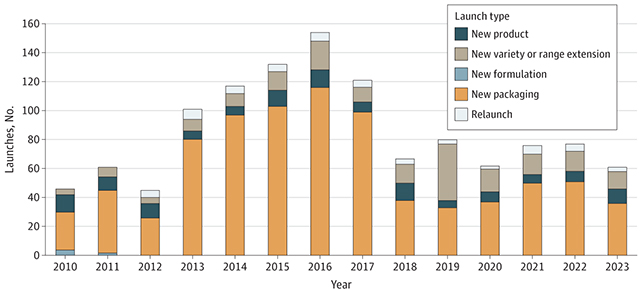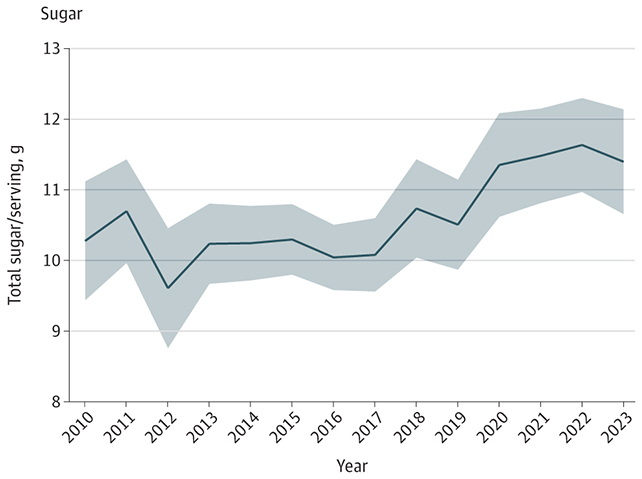 Sugar content alone rose on average by more than 10 percent between 2010 and 2023. (Catherine Falls Commercial/Moment/Getty Images)
Sugar content alone rose on average by more than 10 percent between 2010 and 2023. (Catherine Falls Commercial/Moment/Getty Images)
Millions of us dig into them every morning, but breakfast cereals are getting progressively worse for our health, according to a new study – having grown sweeter and less nutritious over the past decade or so.
It's a worry for everyone, but particularly for kids: the majority of young people in the US choose cereal as their preferred breakfast option, over more labor-intensive alternatives such as pancakes, waffles, and French toast.
Researchers from several institutions across the US looked at the ingredients of ready-to-eat (RTE) cereals launched in the United States between 2010 and 2023, and marketed towards children aged between 5 and 12 years old.
That gave them more cereals than you might expect – a total of 1,200 – though rebrands and repackaging were included. The nutrient content of servings of these cereals were then analyzed through database information, and tracked over time.
 The researchers tracked 1,200 new cereals, though most were rebrands of existing products. (Zhao et al., JAMA Netw. Open, 2025)
The researchers tracked 1,200 new cereals, though most were rebrands of existing products. (Zhao et al., JAMA Netw. Open, 2025)"Analysis of newly launched children's RTE cereals from 2010 to 2023 revealed concerning nutritional shifts: notable increases in fat, sodium, and sugar alongside decreases in protein and fiber," write the researchers in their published paper.
Total fat per serving, for example, rose from 1.13 grams to 1.51 grams over the study period, a jump of 33.6 percent. Average sugar content, meanwhile, went up from 10.28 grams in 2010 to 11.40 grams in 2023, a 10.9 percent increase.
Sodium is up too, from 156 milligrams to 206.1 milligrams on average (up 32.1 percent). While this has been happening, the healthier nutrients in cereals are trending down: both protein and fiber levels have dropped significantly in recent years.
It seems cereals are becoming more like salty, sugary snacks than anything else. On average, a single serving of the cereals included in the analysis would provide more than 45 percent of the daily recommended sugar limit for children.
 Sugar is one of the ingredients that went up over time. (Zhao et al., JAMA Netw. Open, 2025)
Sugar is one of the ingredients that went up over time. (Zhao et al., JAMA Netw. Open, 2025)"These trends suggest a potential prioritization of taste over nutritional quality in product development, contributing to childhood obesity and long-term cardiovascular health risks," write the researchers.
It's worth bearing in mind that this study only looks at newly launched (or relaunched) cereals, and doesn't take into account what else kids might be eating throughout the rest of the day. Nevertheless, it's a worrying trend.
We know that diet and nutrition is an important part of making sure kids grow up healthy and strong, and that includes breakfast. Childhood obesity in the US is now affecting one in five kids, and is on the rise.
As the researchers explained to the New York Times, there's a disconnect between the health claims being made on the front of cereal packets and what's actually included in the box. That makes it harder for parents to choose the right option.
Right now, cereal makers in the US don't have to follow any special regulations beyond the basic health and safety requirements for their products, though slapping a 'healthy' label on the packet does come with some guidelines attached.
"Given their widespread consumption and potential impact on childhood nutrition, understanding trends in cereal composition is crucial for public health," write the researchers.
The research has been published in JAMA Network Open.

.jpg) 7 hours ago
1
7 hours ago
1
 English (US)
English (US)